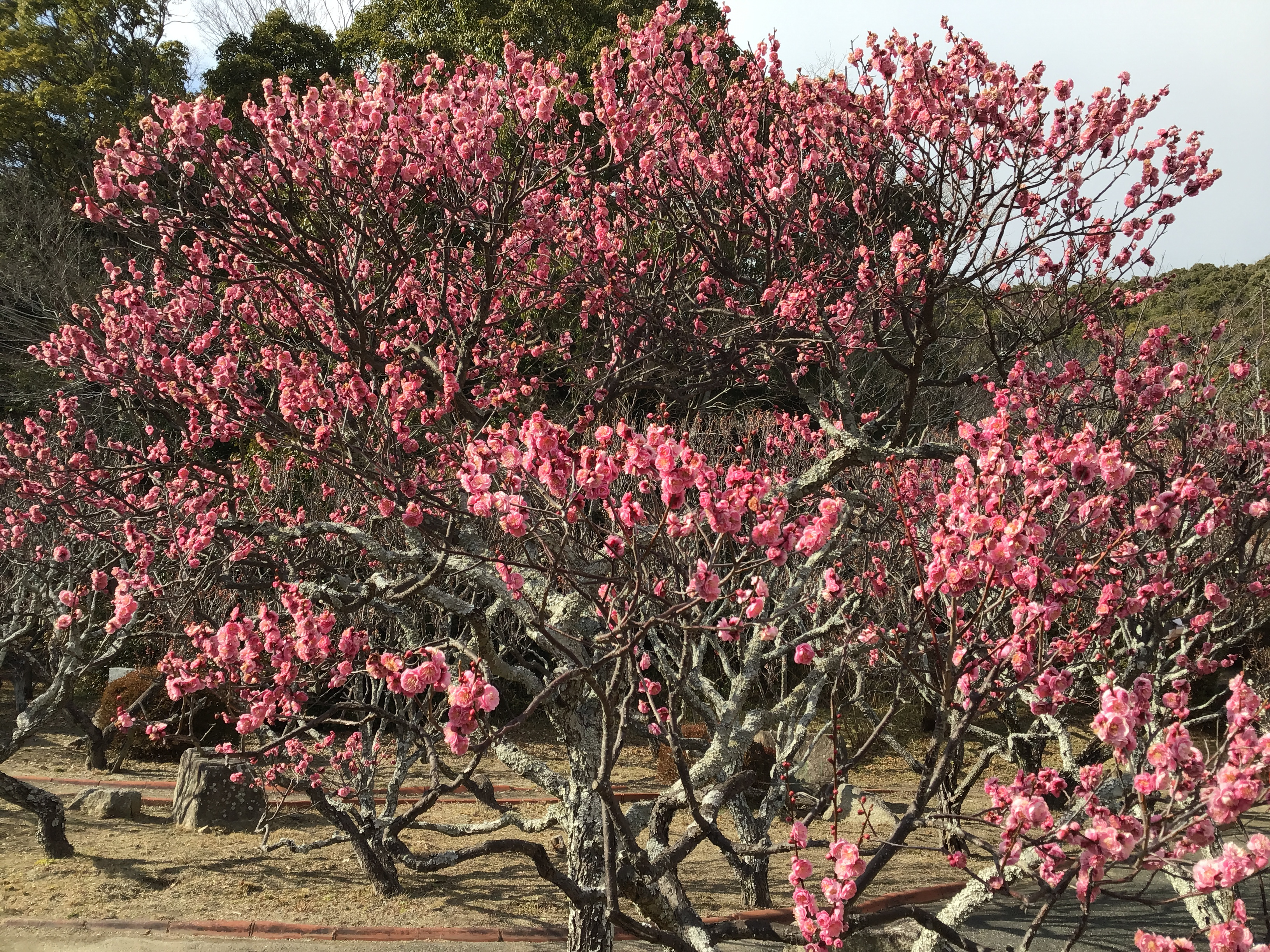
Japan is famous for its cherry blossoms, but less famous are the plum blossoms. I don't know if cherry blossoms turn into edible cherries, or if plum blossoms turn into edible plums, I don't think they do. If they did, there would be a ton of cherries in Japan, and they probably wouldn't be as expensive as they are. I imagine the trees are cultivated for their beauty, not for their ability to provide fruit, but there has to be some way to get more of them, so they would have to have something that allows them to reproduce. Whatever the fact of the matter, there are also plum blossoms trees in Japan, and they are less famous, probably because they are less attractive. Sorry if you like them more, but I think it's an undeniable fact.

Compared to a non-flowering tree, I could see why you would like them. There is not much to most non-flowering trees, but I saw some pretty amazing willows (or whatever they were) in New Orleans. Due to its proximity to a swamp, New Orleans has some amazing flora. Japan is mostly mountains and coastline, so I have yet to see that same kind of amazing swamp greenry, but they have their cherry blossoms and they really lean into that. Runner up is the plum blossom. You can tell that I don't have much to say about them because I keep coming back to cherry blossoms, their much more well known cousin.
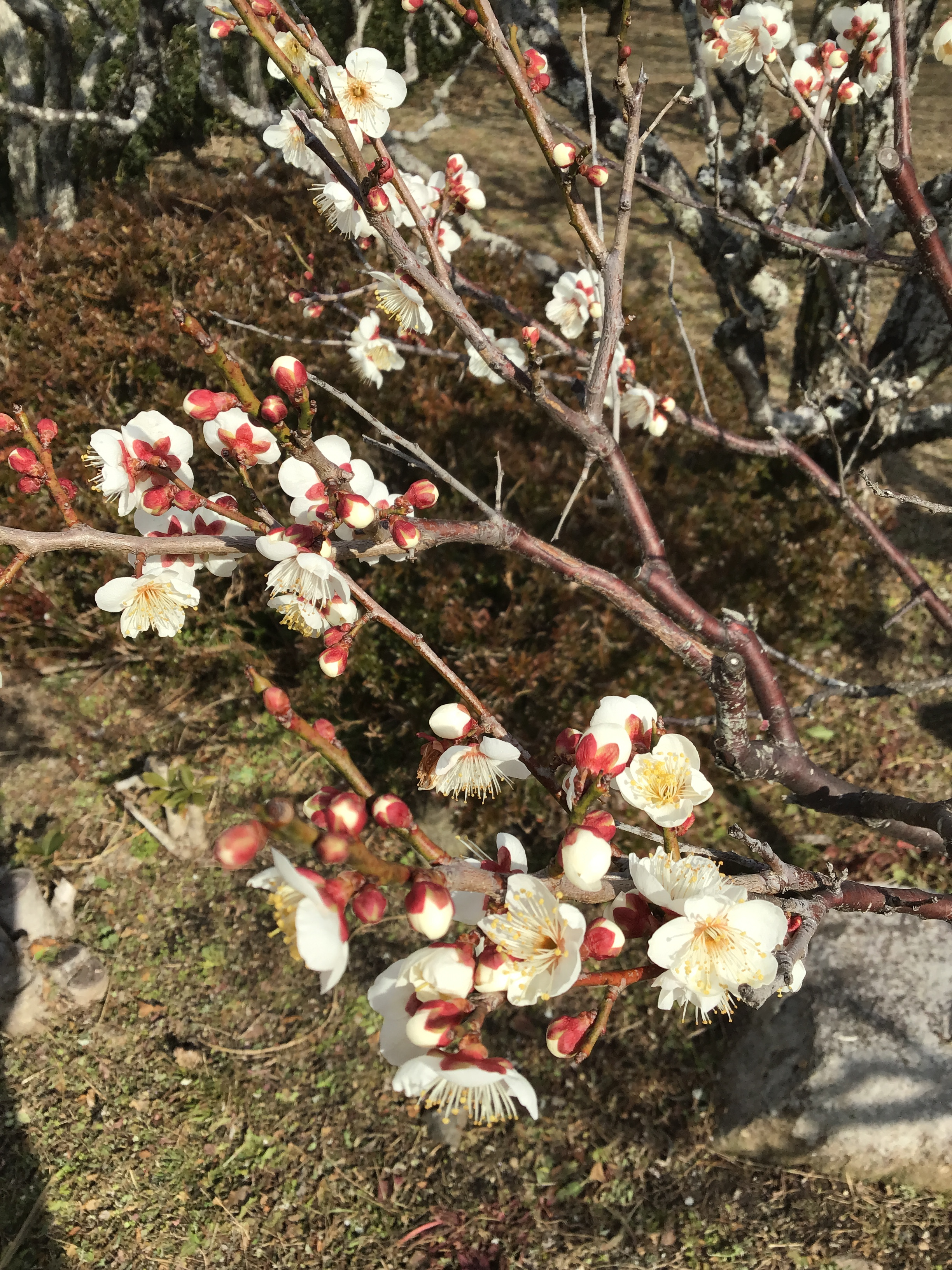
That's it. They are blossoms on a branch. That's enough really, there doesn't have to be much more than that, but if you get there at the right time to see them bloom, they are nice. Unfortunately, we were not there at the right time. Either these were cherry trees and we were really early, or these were plum blossoms and we were only a little early. Without their flowers, I find it hard to tell the difference.
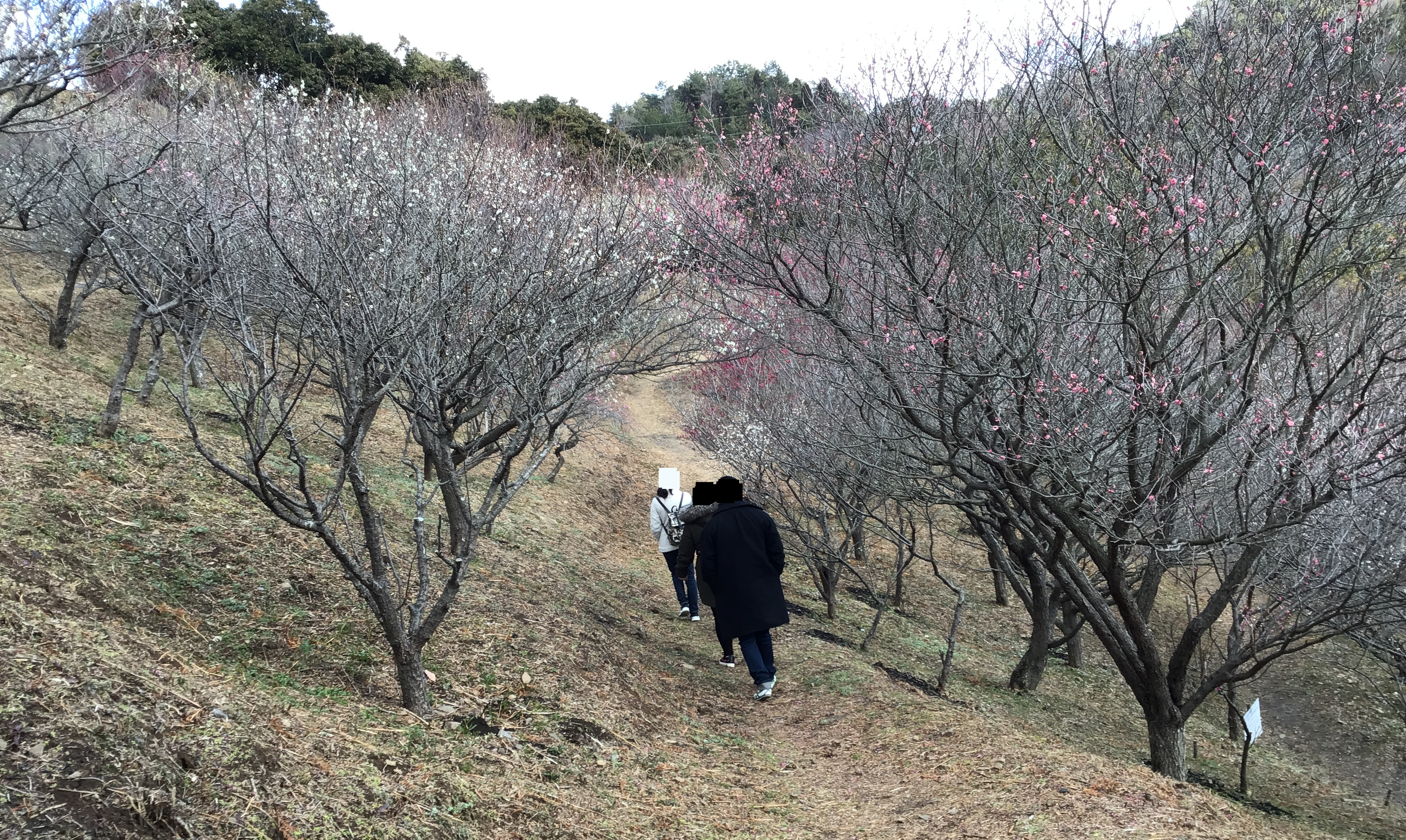
We went to an orchard with another couple that we are friends with. The parks had temples and shrines around them, so I don't know if the purpose was the trees and there were shrines added in to be around them, or if the purpose was to be a shrine, and they added in trees to fill in the gaps. I can imagine either case being the rational.
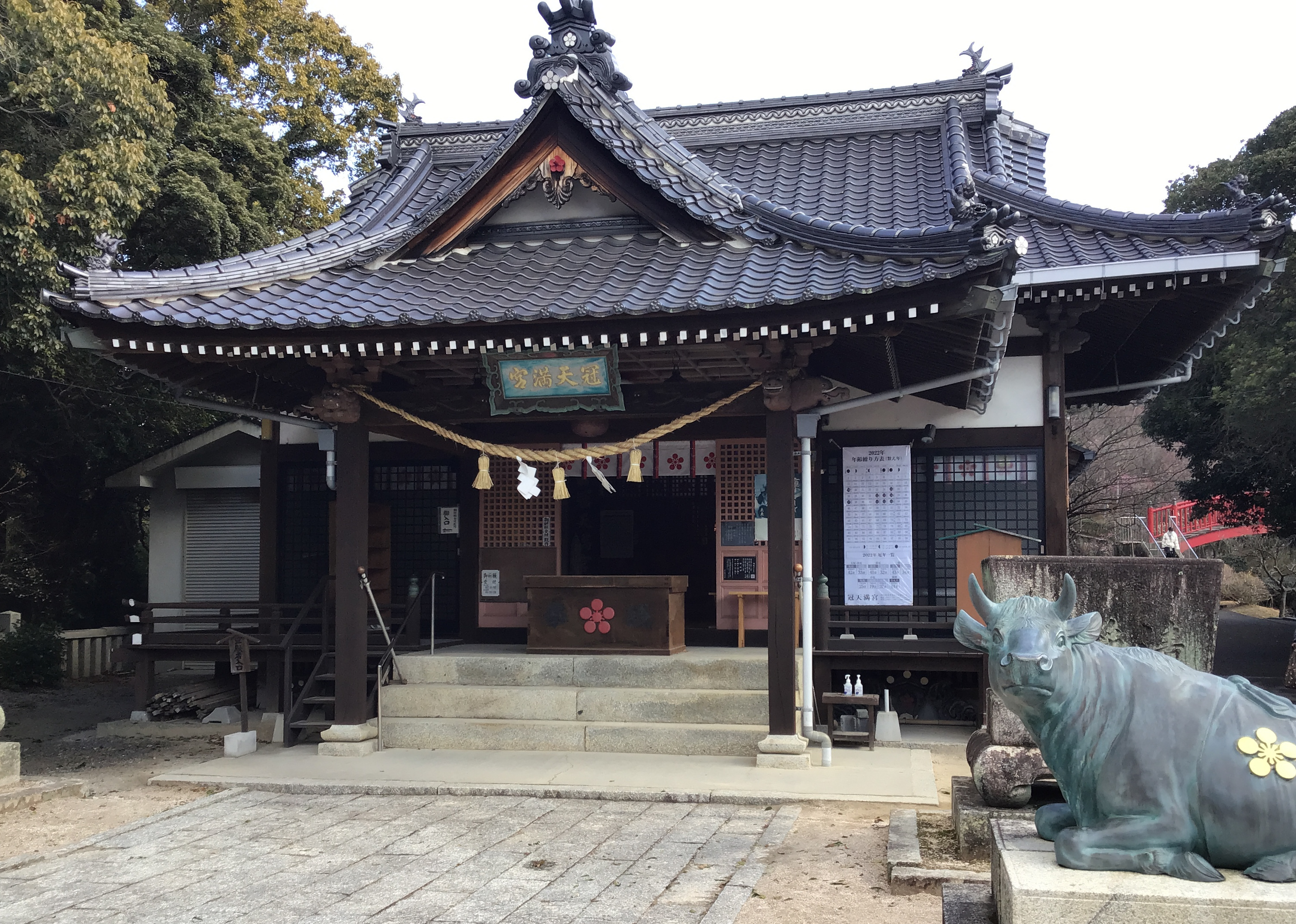
This shrine had a number of small buildings constructed among the trees. They were smaller than most Shinto shrines that I have been to. They tend to come in two flavors: big and accessible and dramatic, or small and hard to get to. This is nothing compared to the Buddhist shrines, those are usually built in hard to reach places. I see the logic of that in a faith with the truth "Existance is Suffering," and I can see why places that were easy to get to night not be as popular with Buddhists.
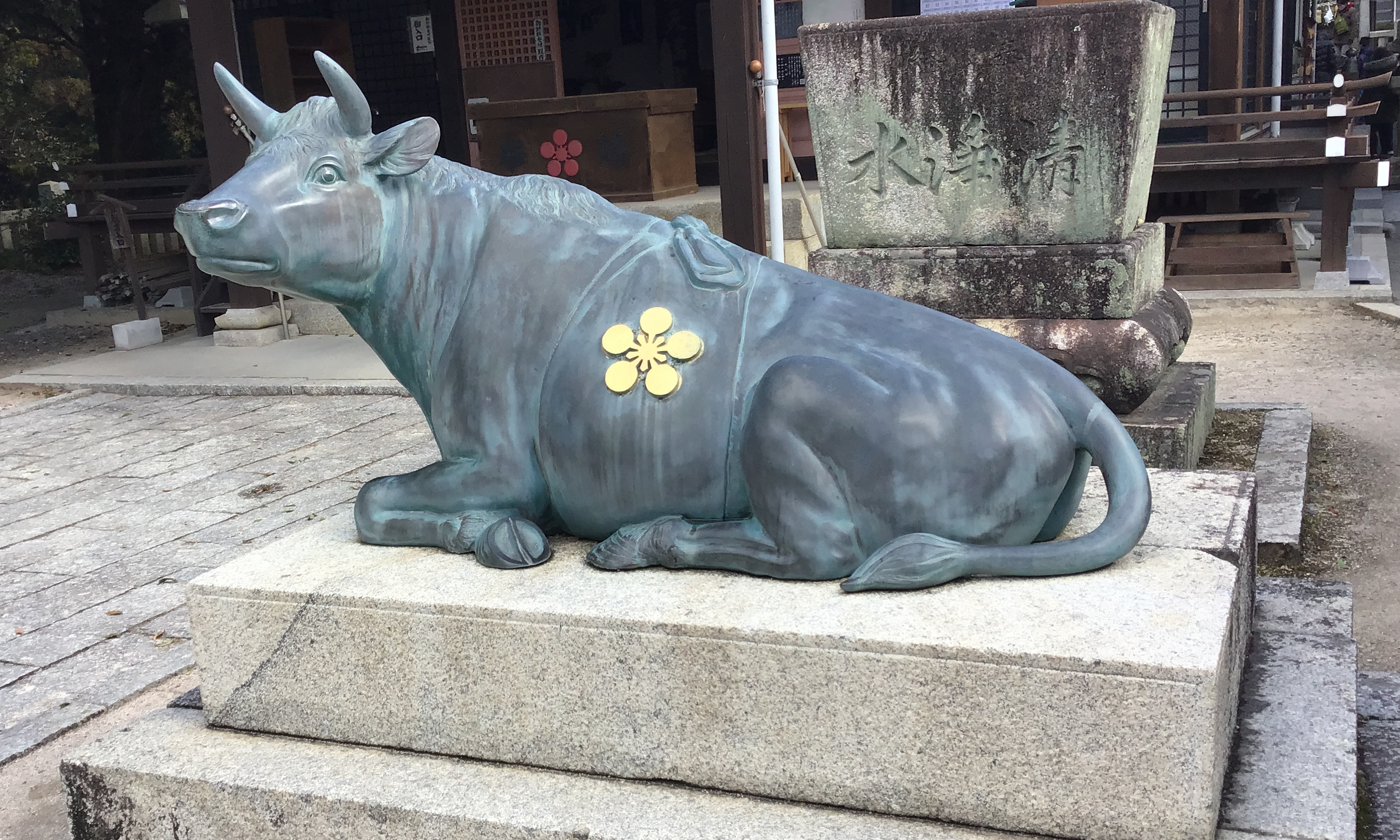
This shrine was positioned in the location where a cow stopped moving. The statue of the cow was erected in that location for that reason. That's what the sign said, but I've seen that cow at other shrines, so I don't know if it's the same cow that stopped at the same place (which totally could be, they are relatively close together, and Japan isn't that big) or if there are multiple cows and this is just common behavior for cows. I wanted to crop it out of the picture with the shrine, but I couldn't figure out a good way to do it, so it just looks like it's photobombing.
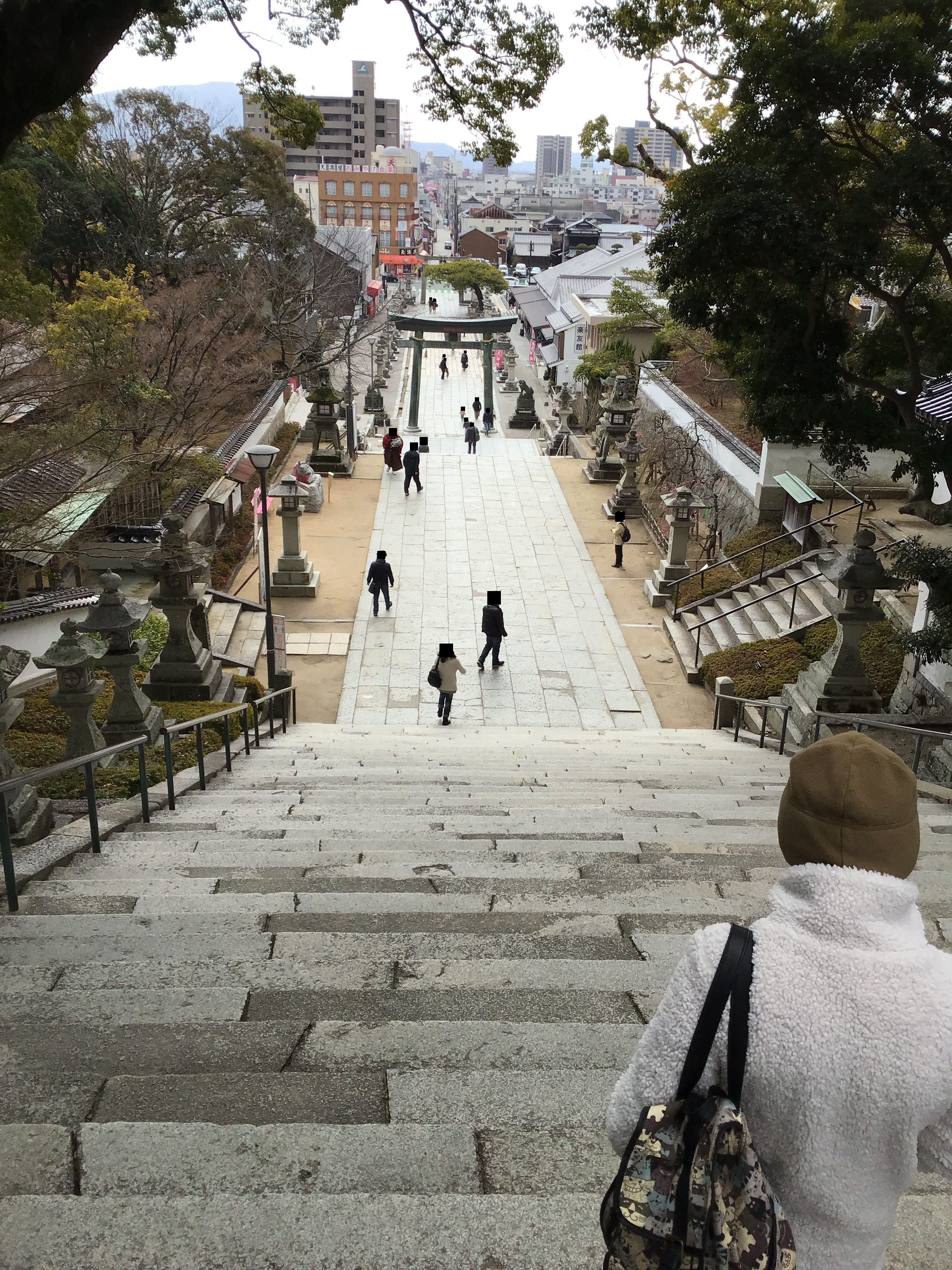
We visited another shrine that day, and this one was closer to a urban area. Of the two, this one was the more accessible temple, and these were the stairs to get to it. A lot of these temples have these long straight avenues of approach, usually with stairs or slopes.
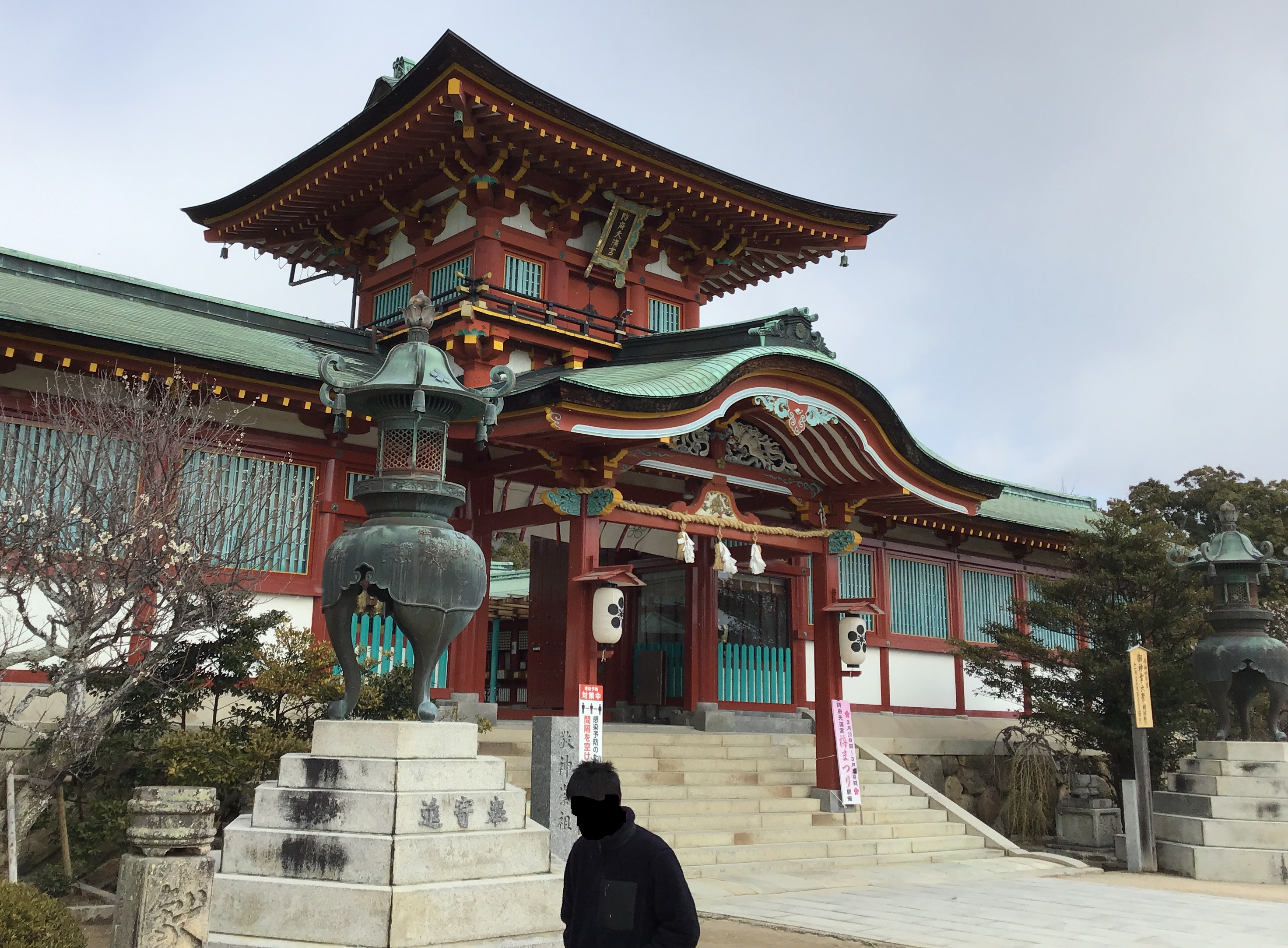
Here's a picture of the second temple. This temple was of the larger and more decorative variety. It had a number of different artifacts around it. They have the general aesthetic of "Japanese Shinto Temple" chic, but I can't see any common elements that pull them together. Some are made of old tarnished copper to get that green coloring, but others are made of stone, and some are made of wood. Normally I would not go with red and green, but that's the scheme that someone thought would look good here.
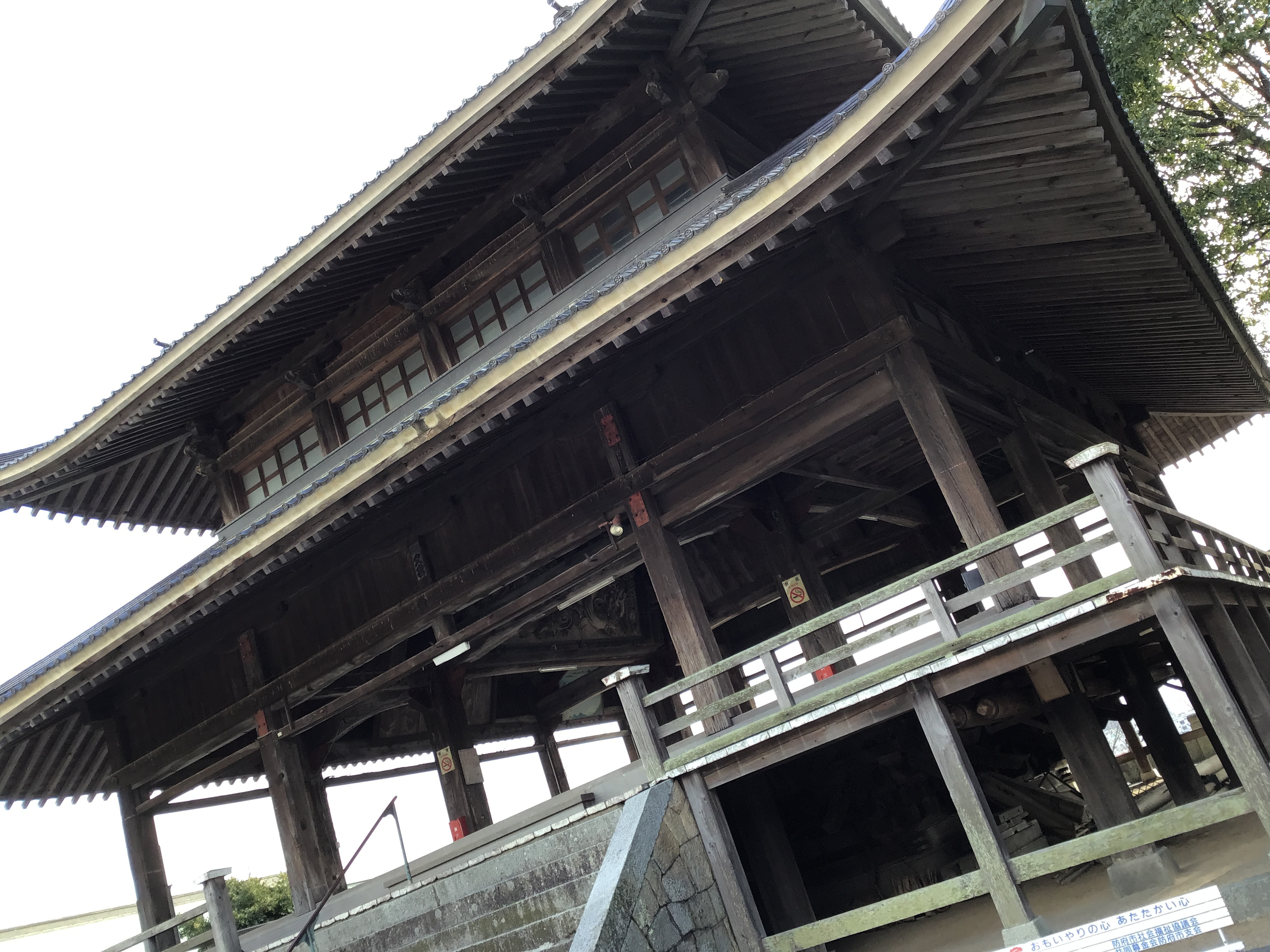
I thought this was kind of cool: there was a path up the hills and into the trees behind the temple, and after a ways there were a pair of open air buildings with tables and garbage cans. If you don't live in Japan, you won't get the significance of that, but understand that there are almost never garbage cans around. In general, it's socially frowned upon to eat while walking, so you can buy food from a convenience store and then loiter outside while you eat, and they will have a trash can there. There are vending machines all over the place, except when you need one, and there are recycling bins next to those. Strip malls with grocery stores have various trash receptacles, but to find a free standing trash can, far from a store, with no one around was very unusual. Not unwelcome, though. If my birthday were not in February, it would be a nice place to have a barbeque.
SarisonZero lives and works in Japan. He played in 4 DnD games in the last 48 hours, and doesn't regret a thing.